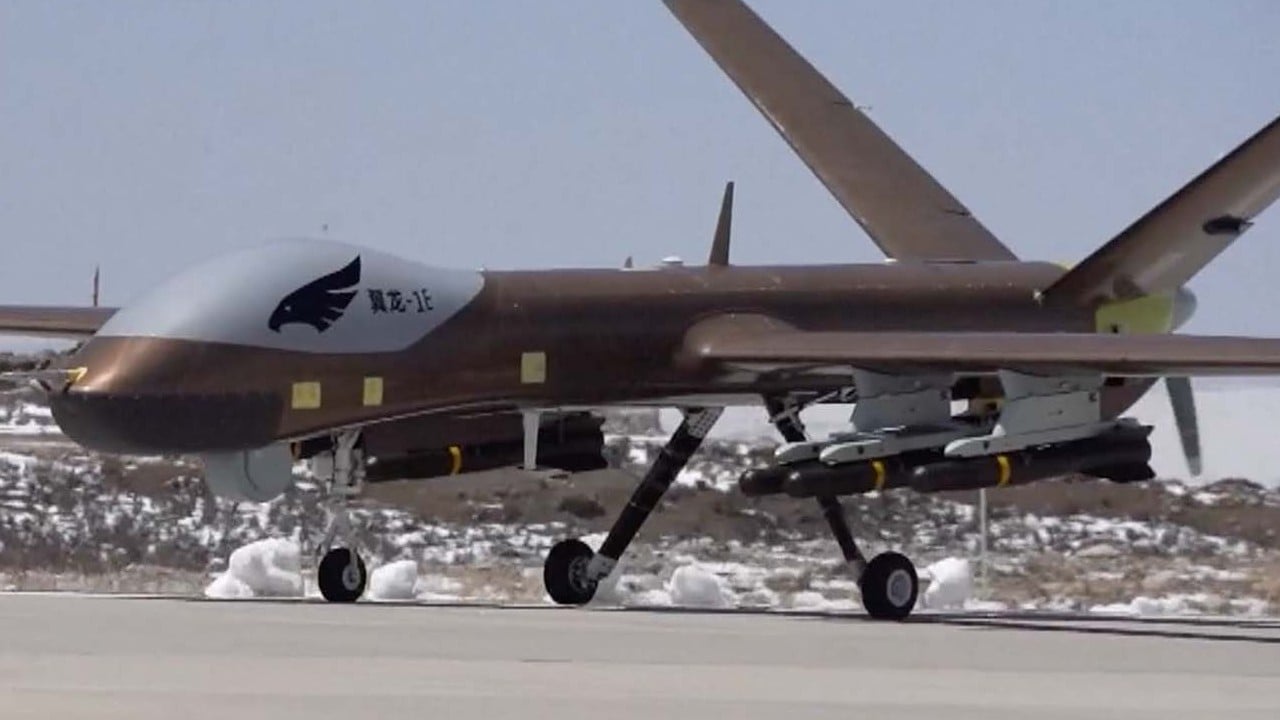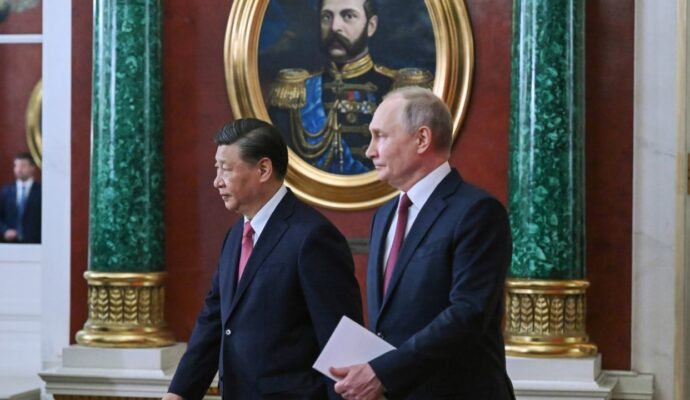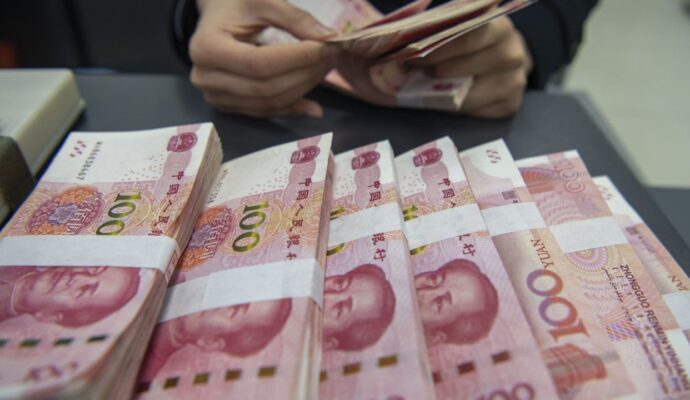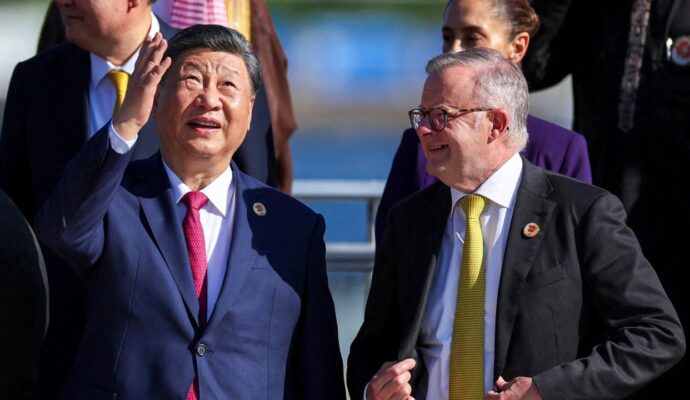The Wing Loong-2, first introduced in 2017, can carry 480kg (1,058lbs) of weapons for up to 32 hours.
Saudi Arabia has operated the model since 2017, when it bought 300 Chinese UAVs. The drone was reportedly used in the Yemeni civil war against the Houthi militia.
Several private Chinese drone companies made their first Saudi appearance at this year’s show. Beijing Hoverwing Technology displayed its largest multipurpose military drone, the HW-150V, which is capable of surveillance, mapping, and air strikes.
“We have already sold it to the [United Arab Emirates] police, and we are also manufacturing it there in the UAE. It’s our first time displaying in Saudi Arabia, and I hope there will be demand here as well,” said Muhammad Aqdas Saeed, a technical executive at Pakistani defence procurement company Crimson International.
“In the future [there will be] a very big demand in the Middle East … because they are shifting their defence technology. They are saving their troops without risking the lives of the soldiers,” said Saeed, who was promoting Hoverwing’s latest UAV models at the defence show.
Leap1 Innovations, another private defence supplier in China, showcased its latest portable coaxial dual rotor drone models, which have vertical take-off and landing functions and can carry a payload of up to 3kg.
“It’s not that heavy, so soldiers can take it around easily. The portable function makes it easier to be used in the battleground,” said Zhang Huimin, a sales representative at the company’s booth.
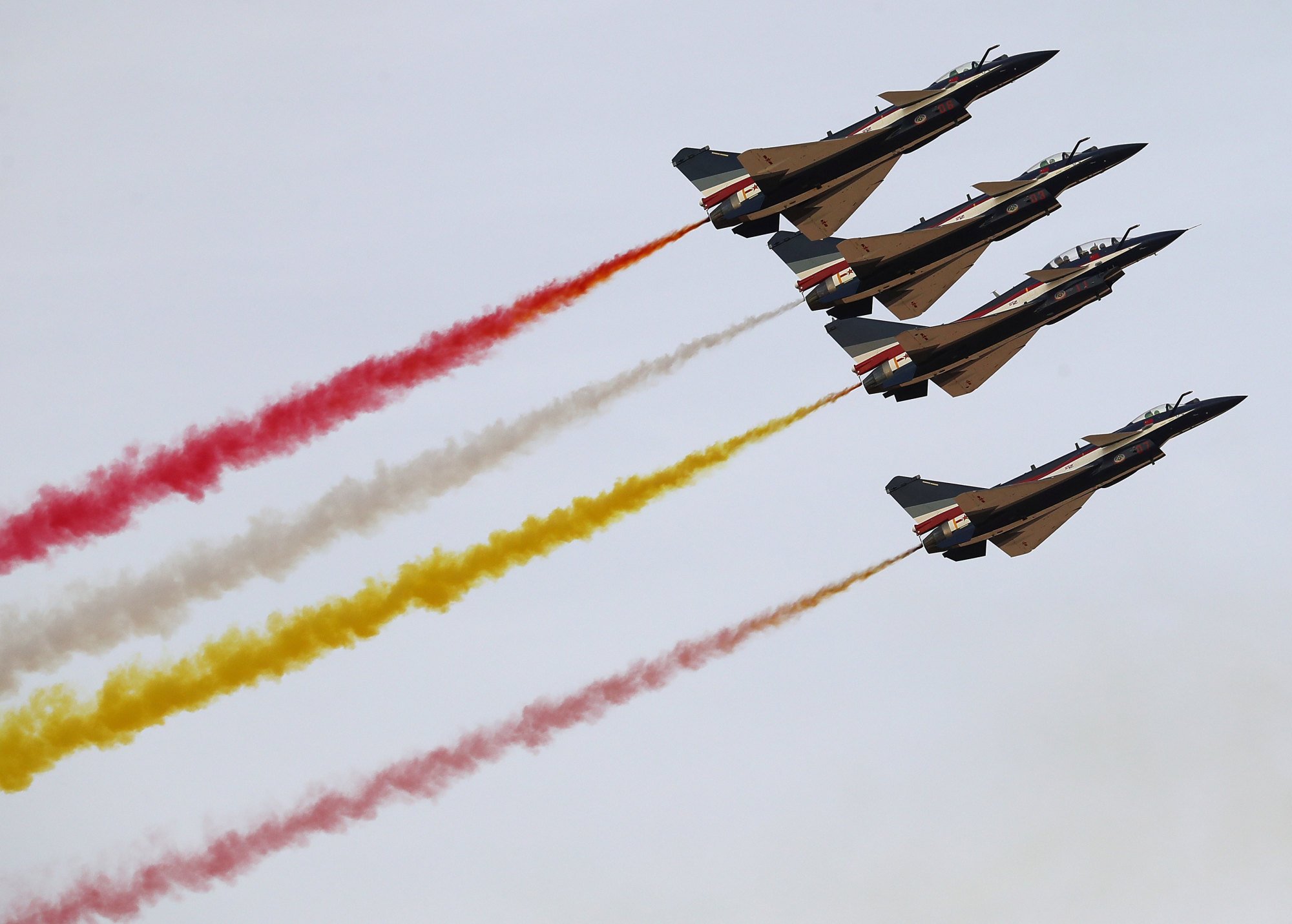
Echoing the theme of this year’s defence show, “Equipped For Tomorrow”, attendees noted that Saudi Arabia and other Middle Eastern countries were interested in acquiring the most advanced military technology – especially drones.
“We all have a collective responsibility to work together toward advancing the aspirations of the kingdom’s military industry,” said Abdullah Abdulaziz Alhammad, deputy governor for strategy and performance at the General Authority for Military Industries, a government entity responsible for regulating and supporting Saudi Arabia’s military industry, at a conference with Saudi officials during the defence show.
“In this era of unprecedented challenges and technological advancements, government and industry have proven essential in propelling our defence capabilities for recognising this dynamic landscape.”
Drones have become increasingly important in conflicts in the Middle East as the Israel-Gaza war enters its fourth month and expands into the Red Sea after the US and Britain launched strikes against Iran-backed Houthi militias that have attacked commercial ships.
Last month, Iran-backed militias made drone strikes on a US military base in Jordan near the Syrian border, killing three American soldiers and wounding around 40 people.
US President Joe Biden expressed plans to retaliate, and Washington launched an air assault last week on sites in Iraq and Syria used by Iran-backed militias and the Iranian Revolutionary Guard.
Will drones replace human agents in Chinese military missions within 10 years?
Will drones replace human agents in Chinese military missions within 10 years?
Kostas Tigkos, head of mission systems and intelligence at global military intelligence company Janes, said drones had proved to be an “effective way” to conduct intelligence, surveillance, and reconnaissance (ISR) and strike missions at a fraction of the cost of manned aviation, without putting pilots at risk.
Tigkos noted that the market for drones was growing worldwide, and in the Middle East in particular, countries have started local development of systems that benefit domestic industry while also offering export potential.
“Given the security and risk situation across the Middle East, UAVs are offering a solution to multiple mission requirements – from persistent surveillance over areas of interest to precision strike – ideal for counter-insurgency,” Tigkos said.
Why Israel-Gaza war might complicate China’s Mideast military drone market
Why Israel-Gaza war might complicate China’s Mideast military drone market
According to a Stockholm International Peace Research Institute arms transfer database, China has exported more than 280 combat UAVs in the past decade.
Countries in the Middle East, North Africa and South Asia are among the biggest buyers of Chinese drones such as the Wing-Loong I and II, and the CH-3 and CH-4.
Tigkos said China had a range of drones with good capabilities and competitive pricing. He added that Chinese drones were easier to purchase than American equivalents because of Washington’s restrictions on armed drone sales overseas.
He said Chinese drones had “repeatedly and over prolonged periods” been deployed in conflicts in the Middle East, such as the Yemeni civil war, and demand in the region was likely to increase over time.
“Generally, they are believed to have been successfully deployed on many occasions … For Middle East cases, it’s mostly in Iraq and [the Saudi-Yemen conflict],” Tigkos said, adding that there were “hundreds of strikes reported from Chinese-made drones” in these conflicts.
